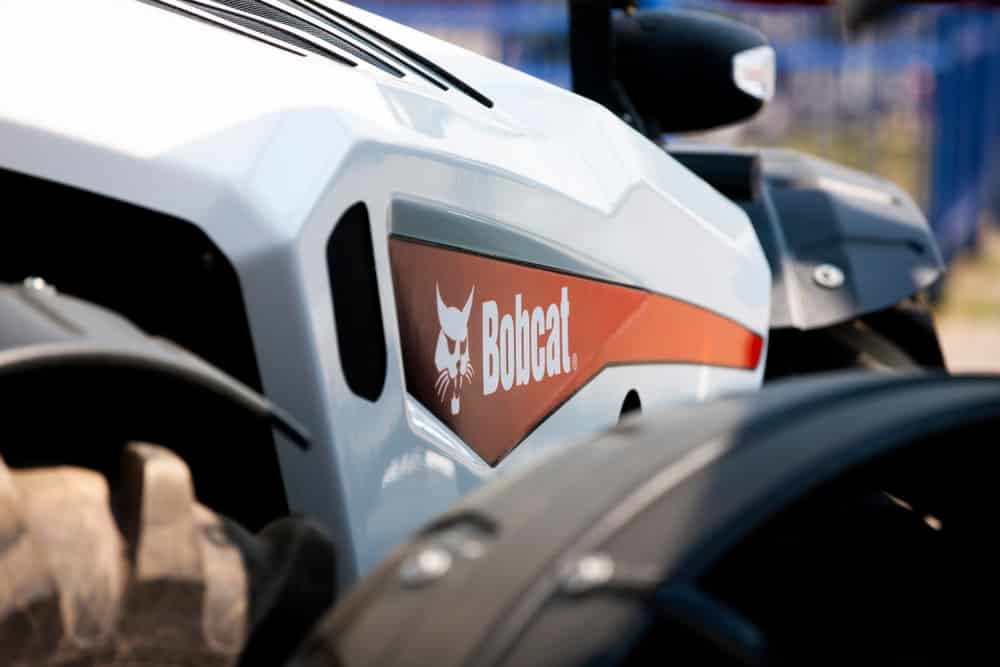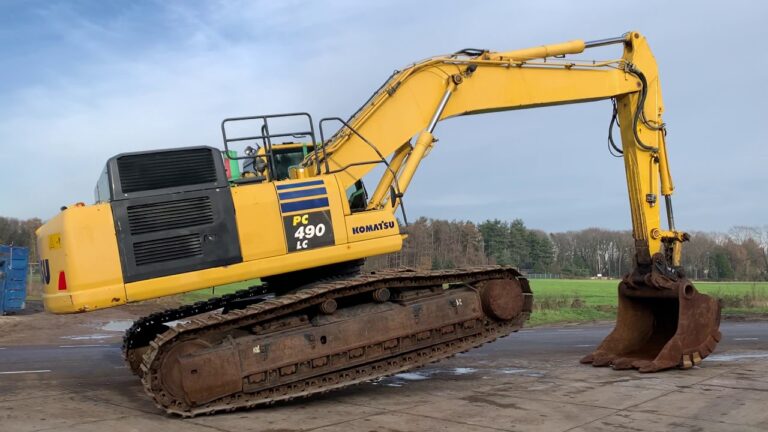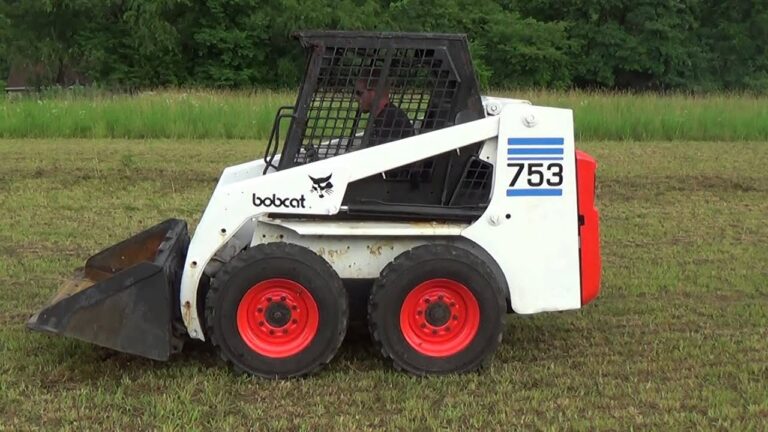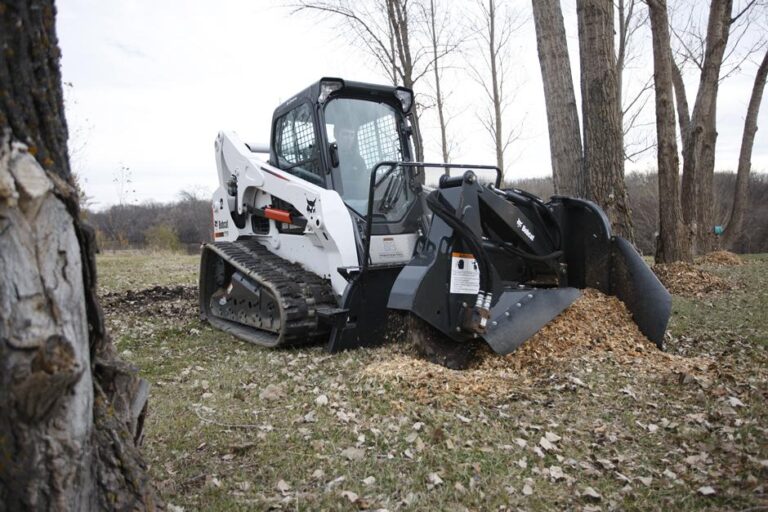
The list of 773 bobcat hydraulic problems and solution will definitely help you to have a better idea about the most common problems related to Bobcat loaders, compact track loaders, articulated dump trucks, skid-steer loaders, excavators, and pretty much any other machines produced by this particular company.
773 Bobcat hydraulic problem 1: overheating
It seems that your hydraulic filter is clogged, causing the pump to overheat and pump oil at a lower pressure than normal. The lower pressure allows more heat to be generated in the pump, causing it to overheat even more. This is a vicious cycle.
The overheating causes the oil to degrade, which causes carbon and other debris to flow into the filter, which aggravates the problem by clogging it even more. It could also cause the pump seals to leak.
The best solution is to replace the filter and flush the system (or both), but this can be expensive and time-consuming. If you just want a quick fix, you can try cleaning out the filter using compressed air. This will not solve all your problems, but it may buy you some time before you have to replace it or flush the system completely.
773 Bobcat hydraulic problem 2: introduction
The 773 Bobcat hydraulic problem 2, is not the most common Bobcat problem, but it’s one that’s really easy to fix. It’s a little tricky to explain, so I hope you will follow along with me in the video.
For this Bobcat hydraulic problem, you need to know how your loader valve works. The valve has two positions for each control. One position is for raising and lowering an attachment (like a bucket). The other position is for opening and closing the attachment (like rolling back the bucket). The main spool in the valve moves from one position to the other when you move your control handle. A spring keeps the spool in its neutral position between the two positions.
If you have a pilot-operated Bobcat loader valve, there are two electric solenoids on top of the valve that control which of these positions the main spool will be in. They do this by pushing and pulling on a pin that fits into holes in the main spool. If both solenoids are off, then the spring pushes on this pin and moves it into a hole in between the two positions (neutral).
773 Bobcat hydraulic problem 3: filter
If your 773 Bobcat skid steer is having a hydraulic issue, it could be the filter. Also, there are some other things to consider when trying to fix the problem. Here is how to test the filter and how to change it out if you find it is bad.
First, check out the oil level. Make sure that the oil level is high enough for the machine to operate correctly, and make sure that there are no leaks in the machine. If you found that there was a leak somewhere in the system, then you will want to fix that before continuing with this process.
Second, check out your pressure relief valve in your case drain line and make sure that it is working properly. If it is not working properly, then you will need to replace that part of your hydraulic system. While you have the parts out of your machine, check out all of your pressure relief valves and make sure they are working properly or replace them if they are not working properly. If any of them are not working properly, then you will need to replace those parts as well.
773 Bobcat hydraulic problem 4: hose
I’m currently working on a 773 Bobcat skidloader and I’ve been having trouble with the hydraulics. The machine would run fine one day and then start acting up the next day, so I replaced all the filters and did a fluid change. When I went to operate the bucket, it started out strong but quickly lost power to lift the bucket. The only way to get it fully lifted was to depress the parking brake (which took a lot of pressure). There was also smoke coming from under the seat when I depressed the brake.
I ordered a new hydraulic control valve and installed it today, but that didn’t fix anything. I can’t find any leaks in any of the hoses or fittings.

773 Bobcat hydraulic problem 5: pump
I have a 773 Bobcat skid steer that I changed the hydraulic pump on. I used a pump from a different machine with the same specs. When I started it up, the engine would rev up and down until I put pressure on one of the joysticks while keeping the other in neutral position. After doing this, it seems to run just fine, but I am not able to lower the bucket until I do this procedure again.
773 Bobcat hydraulic problem 6: cylinder
I have a 773 bobcat skid steer and the hydraulic system has been giving me some trouble. When I first start the machine, everything works great, but after about 15-20 minutes of use, the hydraulics start to act up.
The main symptom is that sometimes when I come to a complete stop (or sometimes if I’m slowing down), the joystick will “slip” to the left or right and the wheels will turn even if I’m holding it steady. It’s like the joystick becomes unconnected from the wheels and then reconnects again.
I’ve been slowly trying to diagnose and fix this problem for about a year now and have replaced many parts, but so far nothing has helped. This is what I know so far:
The problem does not seem to be related to heat in any particular area of the machine (hydraulic fluid is not hot).
Solution to 773 bobcat hydraulic problems
Check the oil level and make sure the oil is clean and has no metal shavings. If there are metal shavings, the hydraulic pump needs to be replaced.
Check all hydraulic hoses for leaks and replace as necessary. If a hose is leaking, the oil will drain out of the system and the machine will not function properly.
Check all control levers to ensure that they move freely. If they are stuck or move very slowly, they will need to be adjusted or replaced.
Check all of the machine’s filters to ensure that they are clean. Replace any clogged filters with new ones.
Locate the air bleed valve on each of the hydraulic cylinders and open them slowly until air bubbles stop coming out of them, then close them immediately. This process is repeated for each cylinder on the machine.


